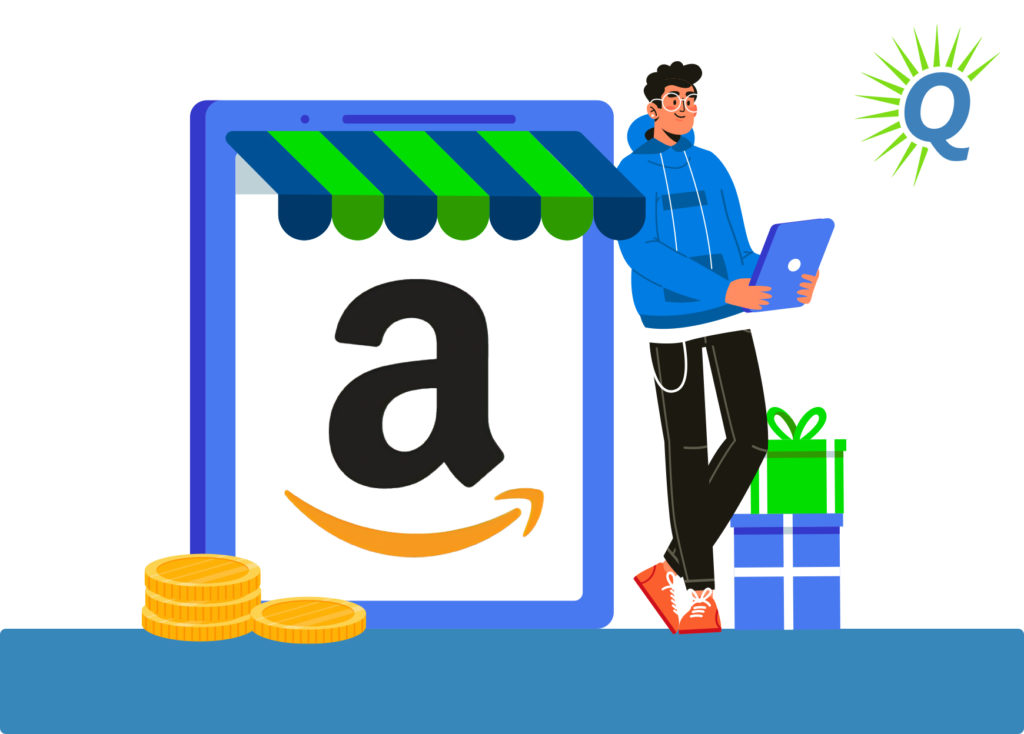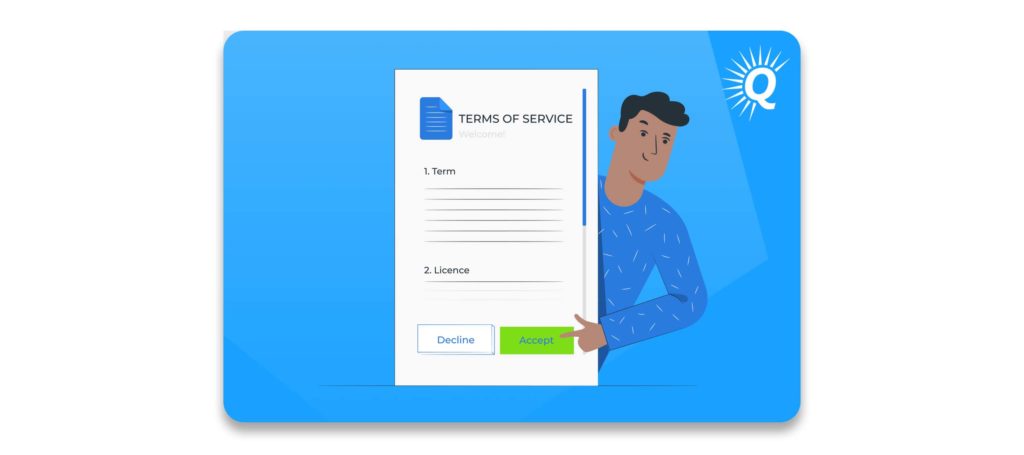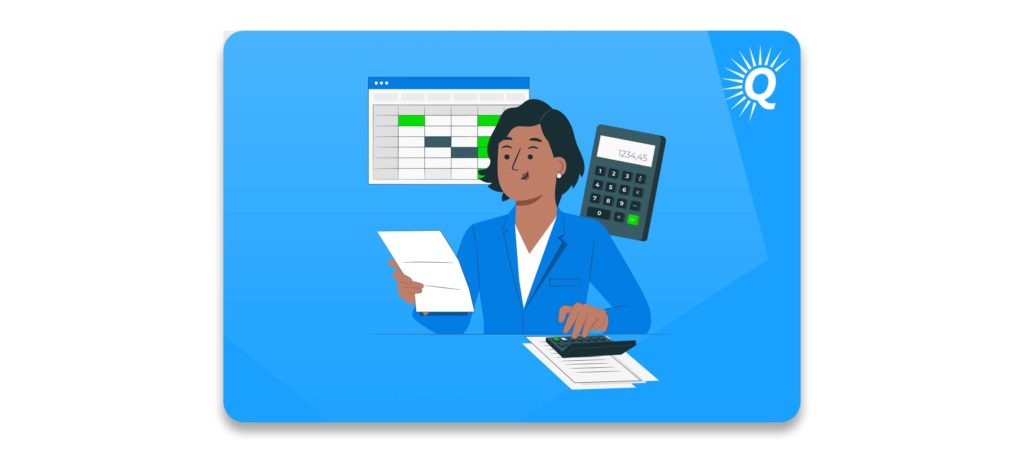Topics:
Never Miss a Beat - Get Updates Direct to Your Inbox
FILTER:


Everything You Need to Know About How to Sell on Amazon
By Quiet Light
With over 300 million unique customer accounts globally, Amazon presents a huge business opportunity for entrepreneurs looking to start an online business. By knowing how to sell on Amazon successfully, you can start a thriving physical product business without even leaving your home.
In this article, we discuss:
- Options for selling on Amazon
- Rules and regulations to consider when starting your business
- How to find winning products
- Tips for getting started


Options For Selling on Amazon
For those who want to start a business on Amazon, it is important to first understand how the business model works, as well as the different options available to you.
Understanding the Amazon Business Model
By providing easy-to-use tools and an enormous customer base, the Amazon marketplace represents a unique opportunity for entrepreneurs to build a physical products business with relative ease.
From an overview perspective, the Amazon business model is quite simple. As an entrepreneur, you own your business, product, and branding. Amazon provides you with the means necessary to bring your product to market.
You are responsible for choosing and sourcing your product and creating your brand. In addition, you are responsible for delivering your product inventory to Amazon if you choose to have Amazon handle your fulfillment needs. We discuss this in more detail later on.


Amazon, in turn, provides you with the ability to list your product in their marketplace in order to reach its customer base. Amazon also provides options for advertising, and seller support, as well as tools to track your sales, performance, and inventory within your Amazon Seller Central account. In addition, Amazon offers you the option of providing shipping and fulfillment services.
This is a simplified version of how the Amazon business model works. Each step in the process involves careful planning and execution. Additionally, there are several decisions that you will need to make when creating your business model.
FBA vs FBM
One of the biggest choices that you will need to make when creating your Amazon business is choosing whether you will leave your product shipping and fulfillment to Amazon or do it on your own. Each option has positive and negative aspects.
FBM, or Fulfilled By Merchant, means that you are responsible for receiving and storing your own inventory in your own fulfillment center. Additionally, you take care of all fulfillment and shipping activities.
If you do choose this route, it is very important that you fulfill your orders in a timely fashion in order to meet your shipping time requirements and ensure customer satisfaction. The biggest advantage of FBM is that it allows you to avoid paying shipping and fulfillment fees to Amazon, boosting your profit margin (assuming you can perform these activities yourself at a lower cost).
FBA, or Fulfilled By Amazon, works differently. With Amazon FBA, you have your product inventory delivered directly to Amazon’s warehouse instead of to you.


As an FBA seller, once an Amazon customer places an order for your product, Amazon’s extensive logistics infrastructure packs and ships your product to your customer in a timely and organized fashion. This saves you a lot of time and worry, freeing you up to focus your efforts on growing your business.
In return, Amazon charges a fee for each package that is shipped. The fee amount depends on the size and weight of the package, ranging from $2.92 to $150 and above per unit.
There is a lot that should be considered when deciding between FBA versus FBM. While an Amazon FBA business may be right for one individual, FBM may make more sense for another. Do your homework in order to make the best decision for your company.
Wholesale vs Private Label
Another important consideration when building your Amazon business is to decide whether you will employ a wholesale or private label business model.
With a wholesale strategy, you purchase an already established product in bulk at a discount. Once your inventory is secured, you then resell each unit individually at retail prices. Some of the advantages of a wholesale strategy include:
- Less time-intensive
- No need to test or build a product
- No IP issues
- Proven demand for the product
- Shorter lead time
However, purchasing a bulk order often requires a significant upfront investment. If you have the resources initially, this may not be an issue for you. Additionally, you need a wholesaler permit in order to resell.


Private labeling is the most popular business model on Amazon, with 67% of sellers selling private label products. With private labeling, you source your product from a third-party manufacturer and then sell it under your own brand name. Private labeling allows you to:
- Have more control of your product, branding, and packaging
- Have more flexibility with your product listing
- Retain more control over order volume and cost
- Create product customizations
- Choose less competitive products
- Take advantage of higher profit margins
However, there can be more work involved with a private label product. For example, you need to test and source your manufacturer and product, create your branding, organize your packaging, and manage your own marketing.
These additional steps can create longer lead times. In addition, you will need to create ASINs for your product, and you may sometimes need to deal with IP infringement complaints.
Knowing the options available to you as a new Amazon seller will help you choose the right business model for your budget and goals.
Amazon Regulations For Sellers
One of the biggest advantages of being a third-party seller on Amazon is the added credibility that comes along with having your product listed on the marketplace. Amazon has carefully created a trusted and well-loved shopping experience for its customers.


In order to achieve its sterling reputation, Amazon is very clear about the regulations and rules that sellers must abide by. Many of the general regulations are spelled out in Amazon’s Terms of Service.
In addition, depending on your product type and the locations that you sell, there may be further rules or regulations that you need to abide by.
Amazon’s Terms of Service
When you create your Amazon seller account, you are required to read and sign the Amazon Seller Agreement. When you do so, it is important to thoroughly read through the document to make sure that you understand its content.
Some terms include, but are not limited to:
- Amazon imposed transaction limits
- Contract termination clauses
- Clauses relating to withholding of funds due to poor performance
- Customer service requirements
- Collection terms
Aside from the Amazon Seller Agreement, there are many other important regulations spelled out in the Terms of Service. These include:
- Policies prohibiting sending marketing emails directly to customers
- Rules requiring that all messages with customers must be on Amazon’s messaging platform
- Rules preventing you from luring customers away from Amazon to purchase elsewhere
- Policies preventing the use of brand names or other tactics to trick customers
- Requirements that you abide by Amazon’s customer information policy when handling personal information
- Stipulations regarding honest use of reviews and ratings
- Policies regarding pricing, duplicate listings, and upsells
- Requirements that you do not falsely manipulate the search algorithm using bots or other methods
- Regulations relating to FBA direct marketing efforts


When you are starting your Amazon business it is important to make sure that you are familiar with all Amazon regulations and guidelines. If you fail to do so, you run the risk of unintentionally breaking the terms of service, jeopardizing your business in the process.
National, State, and Local Laws
In addition to regulations imposed by Amazon, you must also abide by national, state, and local laws. These may include:
- Import laws
- FDA compliance (depending on your product category)
- Sales tax laws
- Currency conversion regulations
Essentially, you will need to ensure that your business is compliant with all of the rules and regulations that would apply to any other business within your industry. For example, if you are selling a supplement product, you would need to ensure that it meets all Food and Drug Administration requirements, just as any supplement company would.
How to Find Products to Sell on Amazon
As mentioned earlier, roughly two-thirds of Amazon sellers choose to sell private label products. If this route interests you, you may be wondering how you actually go about choosing the right product to sell when you are first starting out.
In this section, we discuss the criteria for researching, evaluating, and choosing the right Amazon product for you.
Validate Demand
Some entrepreneurs turn to Amazon in order to launch a newly designed product, essentially creating a new market in the process. These products, known as a Gen product, have the potential to lead to significant success. However, Gen products can be risky, in addition to requiring significant upfront product development investment.
Another option is to find a product category that is already performing well on Amazon, source a similar product within that category, and list it for sale under your own branding. If you do decide to choose this route, it is important to differentiate your product from other similar products.
There is a range of tools available that will help you conduct product research. These tools provide useful information regarding the sales numbers of companies within the Amazon marketplace. One of the most well-known of these tools is Jungle Scout. Additionally, you can also explore demand for the product beyond Amazon.


For example, let’s say that your product research reveals that selfie sticks are putting up large sales numbers on Amazon. This indicates to you that there is a large demand for this product already established in the market. Given that, it may make sense to source and sell your own selfie stick, tapping into the already booming industry.
Explore the Competition
Validating demand for a potential product is not sufficient in order to determine whether a product will lead to success. While high demand is good, fierce competition presents challenges. Before you choose a product, it is important to explore the competition that you would face once your product is launched.
Again, use the tools available to you to analyze the competition in your target market. How many customer reviews do competing products have? What does the competition look like in the market? Are there any promising opportunities that you can identify? If you can find a product that has high demand and low competition, this may be a product that you want to explore further.
Determine Your Budget and Ensure Profitability
Of course, any product that you choose will need to fit into your budget. While you can start relatively small with your first product order, you will still need some startup capital in order to get going. Depending on your budget, it may make sense to choose a relatively inexpensive product when you are first starting off in order to minimize your upfront investment.
Thinking of Selling Your Business?
Get a free, individually-tailored valuation and business-readiness assessment. Sell when you're ready. Not a minute before.
Additionally, you will also want to make sure that your business finances allow profitability. When doing so, you will want to take into account all of your expected costs associated with getting your product to market. These may include your:
- Product cost
- Shipping cost
- Fulfillment fees
- Marketing costs
For example, let’s say you source your product for $5 dollars per unit. Shipping costs to get your product to the Amazon warehouse add another $3 per unit, and fulfillment fees add another $4. In this scenario, let’s say that your marketing efforts tack on another $2. If the retail price of competing products is $14 or less, you will be hard-pressed to turn a profit.
Doing this research before you choose a product and order inventory will save you heartbreak once it comes time to list your product.
Source Your Product
Once you have selected a viable product, it is time to find a supplier. While there are many ways to do this, Alibaba is often the go-to resource when it comes to finding a manufacturer. Alibaba is a platform that allows you to shop through manufacturing partners throughout the globe, order test products, and place large orders.


When doing so, you want to find a product that meets your quality standards as well as your price requirements. In addition, it also makes sense to choose reliable partners that you can build long-lasting working relationships with.
Tips For Listing Your Products on Amazon
Once you have sourced your product and delivered it to an Amazon warehouse or your own shipping center, it is time to list your product on the marketplace. When creating your listing, there are several things to pay attention to in order to increase your chance of success.
Differentiate Your Product
The Amazon marketplace can easily become saturated with competing products. In order to stand out and win customers, it is often advantageous to differentiate your product. During the product sourcing phase, you can do this by choosing a product that has slight improvements compared to competitors.
You can also do this by altering the way you market and present your product on the Amazon marketplace. By highlighting certain characteristics or attributes when others are failing to do so, you will help your product stand out.
Create a Superior Listing
In addition to differentiating your product, it is also important to create a quality listing. When scrolling through multiple product listings for similar products, an Amazon customer will be much more likely to buy from a brand that has a superior listing.
Buy a Profitable Online Business
Outsmart the startup game and check out our listings. You can request a summary on any business without any further obligation.
When it comes to your listing, professional product photography is an easy way to help your product stand out. Professional photos help to instill confidence that your product will be of superior quality.
In addition, make sure that your product descriptions are accurate, intriguing, and professional. Bad grammar or spelling is an easy way to lose credibility.
If you want to boost the quality of your listing even further, you can complete the Amazon Brand Registry process in order to be able to offer A+ Enhanced Brand Content. A+ EBC allows you to provide more extensive product information, as well as more detailed product photos and videos.
Keyword Targeting
When it comes to improving the performance of your product listing, SEO practices and keyword targeting are crucial. It is helpful to conduct thorough research into the keywords that your competitors are using when listing their products. If you can identify keywords that your competitors are failing to utilize, you may be able to gain an advantage.
Sponsored Listings
When it comes to Amazon advertising, Amazon provides its sellers with the opportunity to pay to promote their products through the use of sponsored listings. With this approach, your sponsored product is placed higher up in search results for your product category, allowing you to be seen by more potential customers. When your product shows up in search results as a sponsored listing, it will be labeled as such.


As an individual seller, sponsored listings can be especially useful when you are first launching your product in order to gain attention and drive sales. As such, it is important to set aside some money for sponsored listings when you are first starting out. You can set up a sponsored listing from within your seller account.
In addition to driving sales, sponsored listings also help to improve your organic search ranking. As such, it is important to continue to purchase sponsored listings as your business gains momentum.
In general, it is recommended that you invest 7% of your revenue into sponsored listings in order for your business to remain at a steady state. If you are seeking to grow, you will likely need to invest closer to 10%.
Conclusion
Whether you are looking for a career change, a side hustle, or simply seeking more freedom and flexibility in your work life, starting an Amazon business presents an exciting opportunity.
By becoming informed about the different options available to you when creating your business, the regulations that you will need to navigate, and how to source a winning product, you increase your chances of creating a fun, rewarding, and profitable online business.





